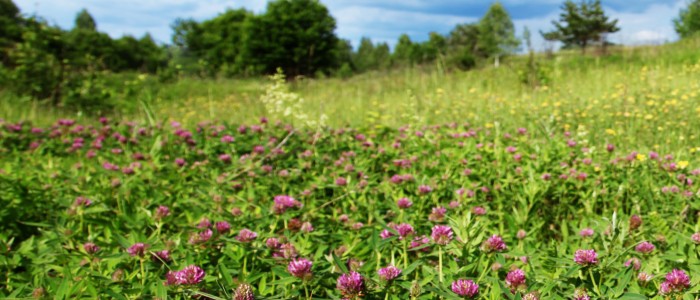-
 Turf Grass Seed Bluegrass, Bentgrass, Ryegrass, Fescues...
Turf Grass Seed Bluegrass, Bentgrass, Ryegrass, Fescues...
-
 Forage Seed Bromes, Clovers, Fescue, Wheatgrass, Legumes
Forage Seed Bromes, Clovers, Fescue, Wheatgrass, Legumes
-
 Grains Wheat Grain, Rye Grain
Grains Wheat Grain, Rye Grain
-
 Cover Crop Seed Buckwheat, Clover, Peas, Ryegrain
Cover Crop Seed Buckwheat, Clover, Peas, Ryegrain
-
 Wildflower Seed Mixtures, Singles, Annual, Perennial
Wildflower Seed Mixtures, Singles, Annual, Perennial
-
 Sprouting Seeds Fully certified Non-GMO Organic seeds for sprouts or microgreens
Sprouting Seeds Fully certified Non-GMO Organic seeds for sprouts or microgreens
Red Clover
Medium Red Clover
Also known as double-cut red clover. Most widely adapted of the true clovers. This short-lived perennial is grown in Canada and most of the U.S. except the Great Plains states and the southwest. Mixes well with grass, used for hay, pasture, and soil improvement. Fertile, well-drained loams, silt loams, even fairy heavy textured soils are preferred to light or gravelly soils. Red clover is used extensively in pasture mixes and for renovating old pastures. Grass should be included in clover mixtures for grazing to reduce chances of bloat. Rotational rather than continuous grazing will help prolong the life of the stand. Most plants produce rose purple or magenta flowers in the seeding year.
Seeding rate 8 to 12 lbs/acre.
Characteristics & Adaptation of Red Clover
Red clover (Trifolium pratense L.) is grown throughout the northeastern U.S. for forage production and use in rotations for soil improvement. It is adapted to areas where summer temperatures are moderate and adequate moisture is available throughout the growing season. Unlike alfalfa, red clover will grow moderately well on slightly acid soils. However, maximum yields are obtained when the pH is 6.0 or higher (Table 1).
Red clover is a short-lived perennial, which usually produces two or three hay crops per year. It is characterized by rapid spring growth and low winterhardiness which contributes to its short-lived nature.
The growth habit of red clover varies from erect to prostrate. Numerous stems with large trifoliate leaves arise from the crown region each year. Red clover has a thick tap root which grows to a length of 24-36 inches. Lateral roots which arise from the tap root are mainly concentrated in the upper 5 inches of the soil. Small ovoid, pinkish, nitrogen fixing nodules can be found on the lateral roots if it is actively incorporating atmospheric nitrogen into protein nitrogen.
Adapted Varieties
Look for good disease resistance and persistence in a crimson clover variety. Varieties which are resistant to both Northern and Southern Anthracnose and Powdery Mildew are recommended for use throughout the states. There are several red clover varieties marketed in Pennsylvania that have been bred for better persistence. With proper management, you can expect these varieties to persist for two to three years after the establishment year. Refer to the current Penn State Forage Trial Report for crimson clover variety performance and resistance information.

